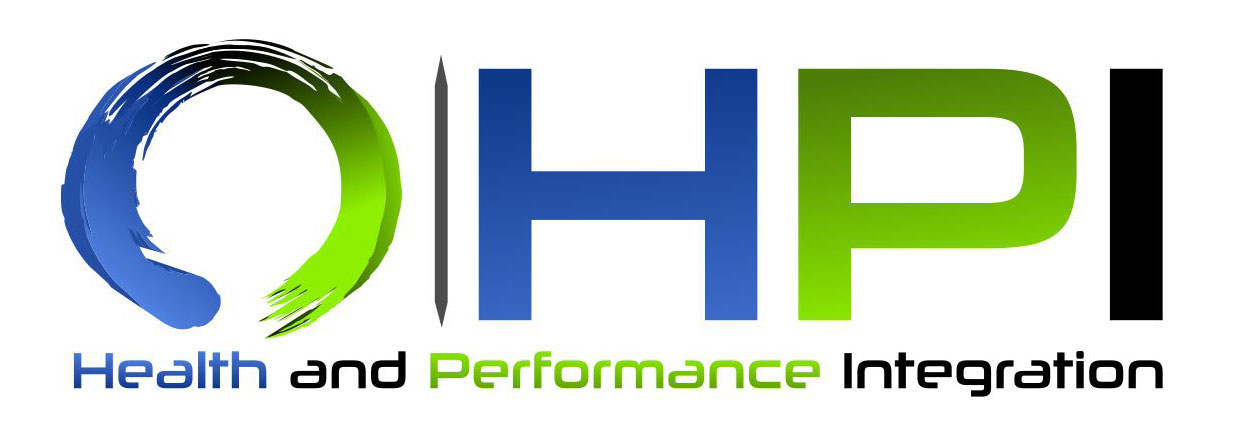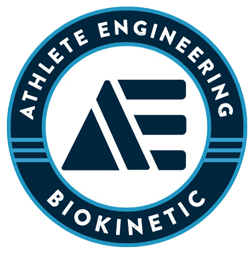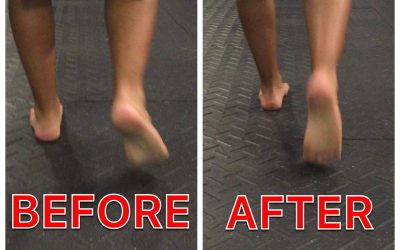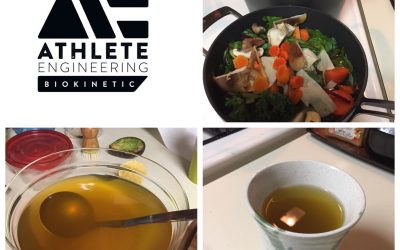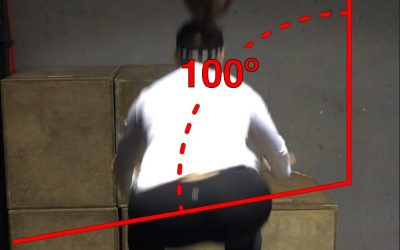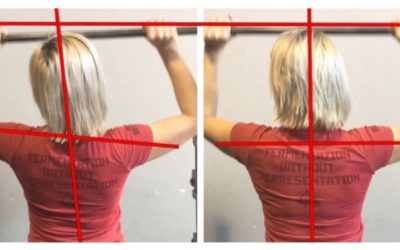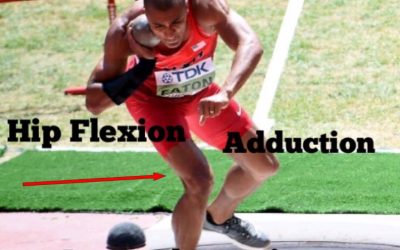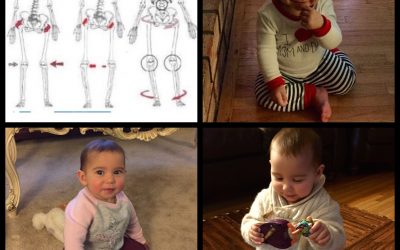Official Website for David Nogaki
Your ultimate resource for achieving POWERFUL HEALTH and PEAK PERFORMANCE
COACHING: Fitness | Weight Loss | Health | Injury Rehab | Sports Performance COACH EDUCATION: Certification | Internship | Seminars EXTRAS: Rates | Blogs | Q&A | AE Concepts | Primal Palate
Blogs
WHAT MAKES YOU YOU
Your are a combination of Biology (Nutrition, Physiology, Chemistry), Kinetics (Structure and Movement), and Energy (Electrical, Mental, Emotional, Beliefs, Relationships, etc). Anything that affects one of these three areas will affect the others. At Athlete Engineering, we work to optimize and balance all three.
#biokinetics #athlete #sports #holistic #optimize #balance
THINK ROTATION
A lot of standard training takes place in the sagittal plane. However, when we move in sports, and even in regular gait, we are relying heavily on rotational movement.
Check out how we were able to improve this athlete’s foot and ankle rotation in one session! The small pics are of the push-off phase in gait, before and after.
There are four joints in the body in which it is vital to have excellent rotation – the ankles, the hips, T5-6, and C1-2. If these four areas rotate well, the athlete will move well, be more agile, have better balance, and be more able to prevent injury.
Perhaps the most important is the ankle (together with the foot) because it connects you to the ground and is the switch that ignites the entire kinetic chain. If the ankle is not rotating properly, the kinetic chain will undergo a series of compensations, which will weaken the structural integrity of the entire system. The foot and ankle act as both a shock absorber and a spring. Ankle rotation is key in order for both of these functions to be successful.
On the left, you see the foot trying to invert and the ankle trying to externally rotate, however, it does not have the functional capacity and instead the whole leg and foot together rotate externally. On the right, after some manual mobilization and movement exercises, the ankle begins to work. In the before video, there is a pic of the foot and ankle during push off phase in gait. You will see the foot rotated externally instead of staying straight. It rotates to compensate for not having the spring effect from the foot and ankle inverting. Instead, it rotates the entire foot externally and pushes rotationally off of the medial portion of the ball of the foot. This is a less powerful method of gait and also creates imbalances in the hamstrings and hips. If the foot and ankle were working properly, like on the right, the push off phase would look more like the small pic here, with the foot staying straight, pushing off the entire ball of the foot.
REJUVENATE WITH VEGGIE BROTH
A great thing to do, especially in the cold winter months, is to make a homemade vegetable broth. It is a great way to get a potent dose of minerals and electrolytes. It will help replenish you from hard winter workouts and it taste freaking delicious.
Scavenge your refrigerator for your leftover uncooked vegetables and throw them in a pot with water. Slow boil for 3 hours. Strain. Enjoy. When you drink it your body knows it is good for you. Use it as an efficient way to get micronutrients, and as a replacement for coffee or tea. Some good veggies to use as a base are carrots, celery, and squashes, but throw anything in there. Also use ginger, turmeric, garlic, and sea salt for more minerals and anti-inflammation and anti-microbe effects.
Put the Bio in your BioKinetic Energy optimizing program!
Eat * Move * Think
Bio * Kinetic * Energy
#nutrition #veggiebroth #biokinetic #energywork #athletes #optimumnutrition #recovery #minerals
LOWER BACK – SHOCK ABSORBER
Does Your Lower Back Absorb Shock or Take A Beating?
This crossfitter complained of low back pain after 17.1. From watching her box jump landing, it was clear that she needed a shift in her BioKinetic Energy field. Check out the level hips when landing after one session!
The hips and lumbar spine should act as a shock absorber when landing from jumping, running, and even walking. In the before video, you can see her pelvis tilts to the left upon landing, creating intense and damaging forces on the disks of the lower back and associated tissues. From a BKEI assessment, it was determined that her lumbar spine needed more rotational movement to the right. During landing, the healthy lumbar will move into extension to provide shock absorption. In order to extend, the spine also needs to be able to rotate and flex. If it has limited ability to move one or more of the other two planes, it will not be able to move in the third plane, in this case extension. Since this athlete was not able to rotate her lower back to the right, her body compensated over time by tightening up her right quadratic lumborum and obliques. These tight muscles are elevating the pelvis when she jumps. Her body is also compensating by twisting her spine above the lumbar to try to get some shock absorption there, since it can’t get it from the lumbar. After some self corrective movements to mobilize the lumbar to the right, and some soft tissue release of the right QL and obliques, her body is able to efficiently and safely absorb shock and thus allows her pelvis and hips to remain level when landing.
Eat * Move * Think
Bio * Kinetic * Energy
STRIVING FOR A FEW DEGREES
THE SHOULDER IS NOT THE PROBLEM
IMG_7769Have you ever experienced one side of your body just not feeling as strong as the other? Watching the video on the left, you will see this athletes structure unstable, the bar tilts to the left, her left shoulder is higher, her torso is sort of bending to the left, and her strength gives out on the third rep. On the right, after one session of BKE Integration, she is considerably straightened out and blows past the third rep with more in the tank, and no shoulder pain.
If you workout, lift weights, or play sports, you most likely have experienced shoulder pain at some point. It is the most commonly injured body part along with the low back and knees. Everyone tries to figure out what is wrong by looking at the shoulder… checking range of motion, etc. then doing physical therapy exercises with bands and other gadgets.
However, the problem often lies somewhere else and you have to search deeper to find it.
The shoulder is stabilized by the shoulder girdle, which consists of the scapula and stabilizing muscles. The scapula rests on the ribs which are connected to the thoracic vertebrae. If the legs, hips, and lower back are not perfectly aligned then the thoracic will not be as well. This means that the ribs will be out of alignment and the scapula will not sit properly in place. This will create an uneven pressure on the shoulder joint when pressing or using it in general. The shoulder is fed nerve supply from the brachial plexus, which originates in the neck. If the neck is out of alignment or has any vertebrae that are not moving properly, the brachial plexus will be compromised and the muscles of the shoulder will not be able to contract properly. When performing a movement, such as the overhead press, you may feel a sudden weakness or pinch in the shoulder on that side. This may go on for a long time, even years, before it does enough damage for you to develop a substantial injury.
Get to the source now and reach your potential with BKE Integration!
Eat * Move * Think
Bio * Kinetic * Energy
CHINESE SKIN SCRAPING
In Crossfit’s around the world, everyone’s back was trashed this week from 17.1. I hope everyone brought out their best recovery techniques and is now feeling good. As for this athlete, Her lower thoracic took most of the abuse. I helped clean up the damage with some Gua Sha, an ancient technique from Chinese medicine to move the chi through muscles when the area has become stagnant. The technique is simple – you scrape the skin in the direction of the heart for several minutes and if scar tissue has formed in the muscles, it will start to come up through the skin and appear as a red rash.
Btw, Gua Sha is the same thing as Graston, was who copied the concept, repackaged it, and marketed it. But anyone can do it and you don’t need an expensive tool. You can use any oil (I prefer coco butter or coconut oil) and an object with an edge, like a plastic lid or even a coin. Just scrape away!
Let’s see what tonight’s announcement will bring for 17.2 and prepare ahead of time for the recovery!
PRONATION EQUALS POWER
In order for the hip to achieve its potential power, it needs to be loaded in all three planes of movement. In the sagittal (front to back) plane, the hip needs to be in hip flexion. In the frontal plane (side to side) it needs to be in adduction. In the transverse plane, it needs to be in internal rotation. If the athlete has proper range of motion to get into this position, along with the neuromuscular ability to create tension, then optimal loading will occur. Like pulling back a bow, you want an optimal amount of both flexibility and tension to create the potential energy to shoot the arrow with power. Pronation happens to some degree when walking, running, changing direction, squatting, and many other movements. It is perhaps the most important of all the functional movements. To read more about testing your pronation, see our previous post called Pronation. Good luck!
Eat * Move * Think
Bio * Kinetic * Energy
HOW DO IMBALANCES BEGIN?
The origin of an imbalance can start when a person is very young, even as a baby. Here is my nine month old daughter. As cute as she is, she is already developing an imbalance in her hips. In all of these pictures, you will notice that she has her left leg back and in internal rotation, and her right leg in front and in external rotation. This is now her go to position for sitting. She probably sat this way one day to give her some stability when learning to sit upright. Then it became a habit and the supporting muscles and ligaments strengthened and the opposite ones stretched to make the position comfortable. Now she has a strength imbalance and ingrained neuromuscular pattern. Every chance I get I try to switch her legs, or have her sit with both in front and then I coax her with a toy on her left side so that she gets some reps in on her left hip external rotators. If this imbalance continues, it will go in the wrong direction and will eventually rotate her pelvis, create a curvature in her spine, and on and on.
All athletes have imbalances. Some start as babies, others develop later. They can come from postural habits, such as standing on one leg, crossing one leg while sitting, carrying a bag on one shoulder, and more. They can also come your sport. Many sports require a repetitive unilateral movement, such as throwing or kicking. Over time, an athlete’s structure will be conditioned for that movement, however, will also be pulled out of optimal alignment. Another common cause of imbalances in structure are imbalanced strength training programs. For example, doing three horizontal pressing movements and only one pulling, or working prime movers and not the stabilizers.
To avoid imbalances and the injuries resulting from them, think about your postural habits throughout the day and night, think about your sport and analyze if the movement required is balanced bilaterally, analyze your strength training program for imbalances, and then create a program to correct all of the issues through new postural habits and movements. One quick example, if your are a soccer player and kick dominantly with your right leg, start off your practice and warmups by kicking a certain number of times with your left leg. I have fixed many lower back and other issues with this approach. Good luck and stay balanced.
Eat * Move * Think
Bio * Kinetic * Energy
